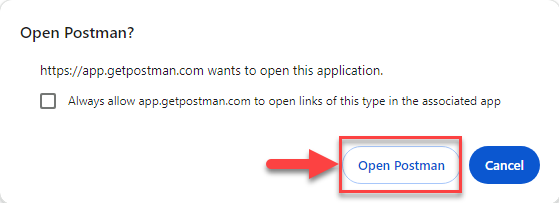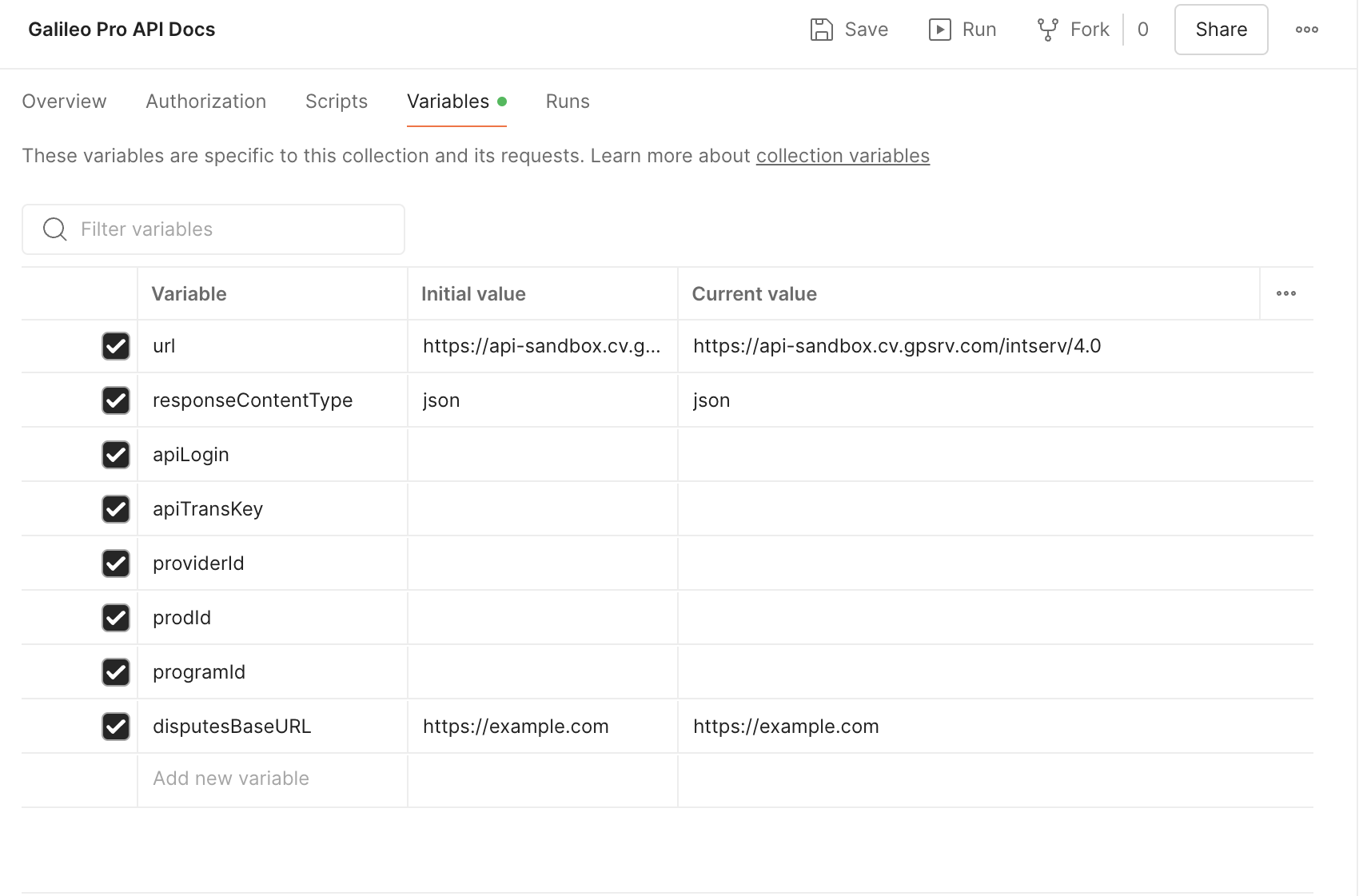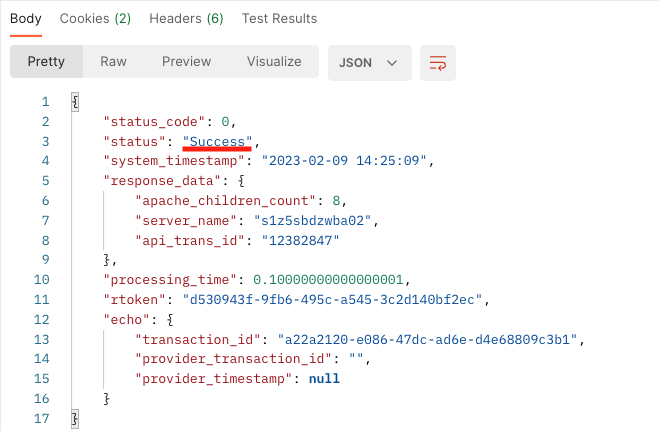Postman Setup
You can use Postman to make calls to Galileo's Program API. This guide describes how to set up Postman, add the Galileo Pro API Docs collection, and test a simple call to the API.
Install Postman
First, download and install the Postman application on your workstation. (You can also use the web version as long as you use the Desktop Agent.) To do this:
- Go to www.postman.com/downloads
- Download the file that corresponds to your operating system.
- When the installation file has finished downloading, click the file to install the application.
- Follow installation prompts on the screen.
Add the Galileo Pro API Docs collection
Follow these steps to add the Galileo Pro API Docs collection to Postman.

- Click Open Postman.

- If you see the Import Collection dialog, select the workspace where you want the collection to be imported to and click Import.
Edit collection variables
Next, copy your credentials from the Sandbox dashboard into the Galileo Pro API Docs collection variables in Postman. These variables will apply across the collection.
Note
You can also use Postman with the CV and Production environments. Credentials for these environments are not in your Sandbox dashboard; rather, you must get them from Galileo when you are set up for those environments.
To add your credentials to Postman:
- Open another webpage and log in to the Sandbox dashboard to access your credentials: https://sandbox.gpsrv.com/
- Scroll down to API CONNECTION DETAILS. These are your credentials for the Sandbox environment.

Note
If you are using Postman in the CV or Production environments, you can create a new Environment for each set of credentials and URLs, or you can input those credentials here to replace the Sandbox credentials.
- In Postman, select Galileo Pro API Docs to open the collection tab.
- In the collection tab, click Variables. This tab will store your credentials that apply across the collection.
- In Postman, paste your credentials into both Initial value and Current value columns.
| Postman variable | Sandbox dashboard value |
|---|---|
apiLogin | API LOGIN |
apiTransKey | API TRANS KEY |
providerId | TEST PROVIDER ID |
prodId | TEST PRODUCT ID |
programId | TEST PROGRAM ID |

Note
There should be two pre-populated collection variables:
urlcontains the base URL for sending API requests to the Sandbox environment. If you use Postman with CV or Production environments, replace this with the URL from Galileo.responseContentTypesets the response format for API requests. The default format isjson, but you can change it toxmlif you prefer.- Ignore the
disputesBaseURLvariable, if it exists.
- Click Save.
Ping the sandbox
You can run a simple test to verify that your Galileo Pro API Docs collection is ready to run in Postman. Follow these steps to send a Ping request.
-
In Postman, open Collections > Galileo Pro API Docs > Miscellaneous and select the Ping endpoint.
-
In the Body tab, you can mouse-over the variables in curly braces to see the values.
- Most of these values come from the collection variables that you entered in the Edit collection variables step.
- For
transactionId, the value{{$guid}}is a Postman command that generates a random ID for each API request that you send. Galileo requires that everytransactionIdbe unique. In some cases,transactionIdis used for idempotency.

- Click Send and check the response. The response status should display
status_code: 0andstatus: Success.

Updated 7 months ago
